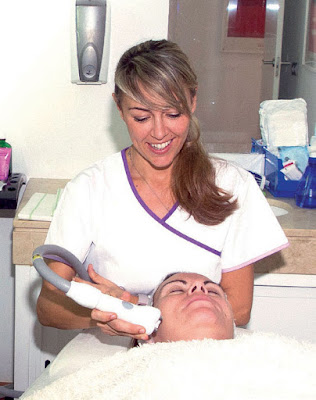Saggy upper arms are something that commonly occur with age, but they can also be caused by weight loss.
To be left with so-called “bingo wings” when you’ve worked so hard on your figure is especially disheartening. If you’ve given up on the gym and are wondering about arm lift surgery, read on for answers to our top 10 most frequently asked questions...
1) Can sagging arms be treated non-surgically?
Improvements in skin tone and texture can be achieved through non-surgical treatments like Venus Legacy, which triggers the production of collagen via radiofrequency. However, if you have significant amounts of loose skin and fatty tissue, this treatment alone won’t be enough to combat the problem. Venus legacy can be used to great effect following an arm lift to really tighten and tone the upper arm skin.
2) Do I need an arm lift or liposuction?
If you have fatty deposits on your upper arms but tight skin you could be a candidate for liposuction. If, on the other hand, you have excess fat and lax skin, liposuction would not be sufficient. This is because liposuction has little effect on the elasticity of the skin. You would therefore be left with hanging arm skin.
3) What is a mini arm lift?
A mini arm lift is a procedure with a shorter incision that is hidden in the armpit area, however not all patients are suitable candidates. When loose skin is confined to the upper arm, near or in the armpit, this technique can be used, but it will not produce much improvement in patients with laxity throughout the entire upper arm. In that case a full brachioplasty (arm lift) is the best option.
4) What scars will an arm lift leave?
A full arm lift involves making two incisions; one horizontally in the armpit and one vertically, which extends from the armpit to the elbow (exact length varies depending on how much excess skin is to be removed). The incision is placed on the inner arm, in the groove between the biceps and triceps, so that the scar is hidden when the arms are down. Your scar will fade over time, but its visibility will depend on your skin colouring and individual healing capacity.
5) Will an arm lift correct the crepey skin on my arms?
Tightening the skin via an arm lift will help to correct the crepey appearance. However, the trade off of having a scar may not be worth it if you do not have significant amounts of excess skin. Skin quality can be improved via non-surgical treatments such as radiofrequency and mild chemical peels.
6) Will an arm lift help sagging skin on the forearms?
A standard arm lift does not address sagging skin on the forearms. The procedure can be modified to include a forearm lift, however this will involve an additional incision on the inner forearm. A forearm lift can also be performed in isolation, but patients with loose forearm skin generally have loose upper arm skin as well. Hence, it is more common to combine the procedures.
7) Will an arm lift work for stretch marks?
If you decide to undergo an arm lift, an area of skin on your upper arm will be surgically removed, along with any stretch marks present on that skin. However, the stretch marks outside of the surgical excision area will still be there. Their appearance can be improved with skin resurfacing treatments such as Venus Viva.
8) I have saggy elbows. Am I a good candidate for an arm lift?
If the sagging is caused by excess fat around the elbow, isolated elbow liposuction may be sufficient. If it is caused by loose skin, you probably also have laxity of the upper arm skin and a full arm lift is the best option. The arm lift will be modified to tackle the loose elbow skin, with a crescent incision placed above the elbow.
9) How long is the recovery from an arm lift?
Arms lifts are usually performed as an outpatient surgery (you go home after surgery), in just a few hours. There is relatively minimal discomfort associated with the procedure and, if you have a desk job, you may return to work in a few days. If your job is physical, however, you may need to factor in several weeks off. Heavy lifting should be avoided for six weeks.
10) How long do the results of an arm lift last?
The results of an arm lift are permanent. However, your body will continue to age, including your skin. This means you may develop loose skin in the future, albeit far less significant. You will need to avoid considerable weight gain and weight loss post-surgery to maintain the results.
Do you have further questions about arm lift surgery? Contact Ocean Clinic for a consultation or send us a message on Facebook.






